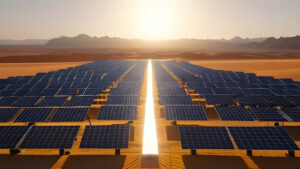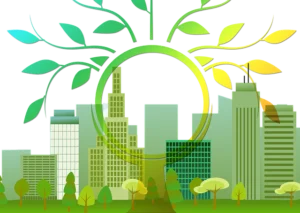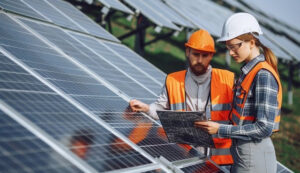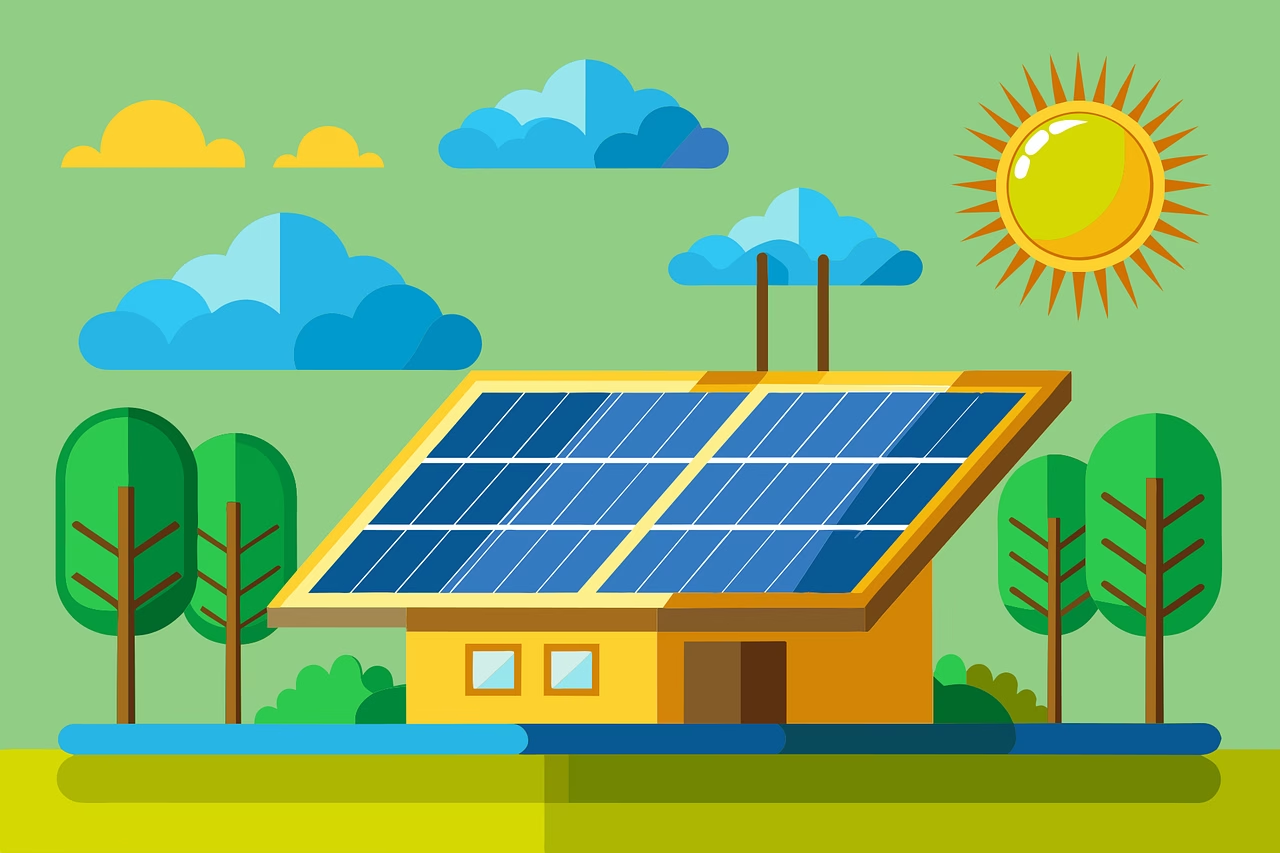Renewable Energy – The Need for New Energy Sources
Our planet faces big environmental problems, and we are running out of fossil fuels like oil, gas, and coal. Because of this, we need to find new ways to get energy that is better for the environment and can last for a long time. Sources like solar, wind, and water power are our best hope for a greener, cleaner world.
Energy from Nature
It comes from natural sources that are constantly replenished. There are of different types, and they all use nature’s resources in smart ways.
Power from the Sun
Solar energy uses the sun’s endless supply of light to make electricity. Solar panels absorb the sun’s rays and turn them into electrical power. Another way to use solar energy is through concentrated solar power systems that use mirrors to focus the sun’s heat and drive turbines to generate electricity.

Renewable Energy from the Wind
Wind energy takes advantage of the constant movement of air in our atmosphere. Huge wind turbines catch the wind with their spinning blades and use that motion to create electricity. Wind farms, especially those located near the ocean, can produce a lot of energy from the strong, steady winds over water.
Hydropower: Harnessing Flowing Water
Hydroelectric power plants use the force of flowing water to spin turbines and make electricity. Dams and reservoirs control the flow of water and convert its motion into energy. Some hydropower systems can even store water and release it through turbines when more electricity is needed.
The heat from the Earth
Geothermal energy comes from the natural heat inside the Earth. By drilling deep into the ground and capturing this heat, geothermal power plants can generate electricity or provide heating and cooling for buildings.
Energy from Plants and Waste
Biomass and biofuels are renewable sources of energy made from organic materials like crops, plant waste, and even trash. These materials can be burned, converted into gases, or fermented to produce heat, electricity, or liquid fuels for transportation.
Benefits of Renewable Energy
Using renewable sources of energy is better for the environment than burning fossil fuels. It also helps countries rely less on imported fuels and become more energy-independent. Plus, many renewable systems of energy can provide power to remote areas that don’t have access to traditional electricity grids.

New Jobs and Economic Growth
As the world shifts, new industries and job opportunities are being created. Building and maintaining renewable energy systems requires workers in manufacturing, installation, and maintenance, which can boost local economies. The costs of renewable technologies are also falling, making them more affordable.
Challenges to Overcome
Despite the benefits, there are some challenges to using renewable sources of energy more widely. Solar and wind power can be inconsistent, so we need better ways to store energy for times when the sun isn’t shining or the wind isn’t blowing. We also need to modernize our electrical grids and infrastructure to handle these new energy sources.
Initial costs for renewable energy projects can be high, but the long-term savings and environmental benefits often make up for it. As technology improves and more projects are built, the costs will keep dropping.
Working Together for a Sustainable Future
To make renewable energy a bigger part of our energy mix, everyone needs to work together. Governments can create policies and incentives to encourage renewable energy use. Companies and researchers can develop new technologies and make them more affordable. And people can learn about the advantages of renewable energy and support its growth.

They epresent an important moment in human history. By embracing these clean, sustainable sources of power, we can meet our energy needs while protecting the planet for future generations. It won’t be easy, but with cooperation and innovation, we can build a greener, more sustainable world.
READ ALSO
DNA The fascinating Building blocks of Life
Frequently Asked Questions
1. What are the main types of renewable energy sources?
The primary sources are solar, wind, hydroelectric, geothermal, and biomass. Solar energy comes from the sun’s radiation, wind energy harnesses the kinetic energy of moving air, hydroelectric power uses the force of flowing water, geothermal energy taps into the Earth’s internal heat, and biomass energy is derived from organic materials like crops and waste.
2. How do renewable energy sources benefit the environment?
These sources have significantly lower carbon emissions compared to fossil fuels like coal, oil, and natural gas. By generating electricity without burning fossil fuels, helps reduce greenhouse gas emissions, air pollution, and the environmental impact of production. Additionally, renewable sources are sustainable and won’t deplete over time like finite fossil fuel reserves.
3. Are renewable energy sources reliable and consistent?
Some renewable sources, like solar and wind, can be intermittent and depend on weather conditions. However, advances in energy storage technologies like batteries and pumped hydro storage help mitigate this variability. Combining multiple renewable sources and integrating them with conventional power plants can ensure a consistent and reliable energy supply.
4. What are the challenges in adopting renewable energy on a large scale?
The initial costs of installing renewable energy systems can be higher than traditional fossil fuel plants, although these costs have been declining rapidly. Integrating renewable sources into existing power grids and infrastructure can also be challenging and may require upgrades.

Additionally, some sources like wind and solar have lower energy densities and may require larger areas for deployment.
5. How can governments and individuals support the growth of renewable energy?
Governments can implement policies and incentives like tax credits, feed-in tariffs, and mandates to encourage the adoption of renewable energy technologies. They can also invest in research and development to drive innovation and cost reductions. Individuals can support by choosing renewable electricity plans from their utility providers and installing solar panels or other systems in their homes or businesses.
References:
- International Energy Agency. (2021). Renewables 2021. Retrieved from https://www.iea.org/reports/renewables-2021
- RenewableEnergy Policy Network for the 21st Century. (2022). Renewables 2022 Global Status Report. Retrieved from, https://www.ren21.net/gsr-2022/
- International Renewable Energy Agency. (2022). Renewable Power Generation Costs in 2021. Retrieved from https://www.irena.org/publications/2022/Jul/Renewable-Power-Generation-Costs-in-2021
- National RenewableEnergy Laboratory. (2021). Renewable Electricity Futures Study. Retrieved from https://www.nrel.gov/analysis/re-futures.html
- Lazard. (2021). Lazard’s Levelized Cost of Energy Analysis – Version 15.0. Retrieved from https://www.lazard.com/perspective/levelized-cost-of-energy-levelized-cost-of-storage-and-levelized-cost-of-hydrogen/

